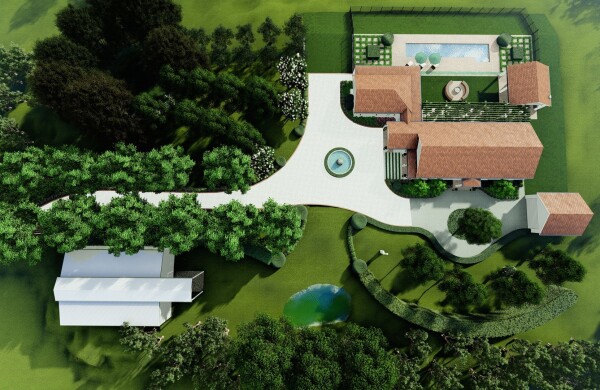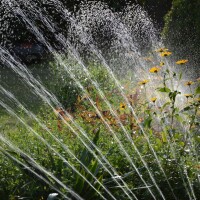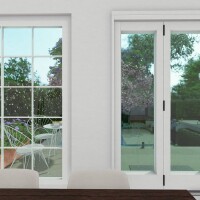How Roof Drainage Impacts Your Garden Design


As a roofer, I’ve seen it too many times. A spotless roof, brand-new gutters, every tile double-checked, and still, the garden can end up flooded during a storm!
One job in Marrickville really stands out as an example. The house belonged to a lovely older couple with raised veggie beds in their garden. However, after a particularly severe summer storm, it was a total mess. Their downpipes dumped straight into the garden, destroying their veggie patch and turning the lawn into sludge.
Many people don’t realise that their roof and their landscape design are inextricably linked!
Now, I’m a roofer, not a horticulturist.
But I’ve worked on enough homes to know that if your stormwater isn’t being managed properly, you’re just waiting for a disaster to happen.
Plus, you’re wasting a free, natural resource!
That’s why I’m sharing some tips I’ve learnt over the years on how to use landscape design to protect your home from stormwater! If you’re in Sydney, I’ve also got some suburb-specific tips and even a crew of online garden design pros who know precisely how to integrate stormwater into your garden.
How Your Roof is Already Damaging Your Soil
Your roof might be watertight, but it’s the water that comes off it that’s the problem.
Every square metre of roof collects around a litre of water per millimetre of rainfall.
So if you’ve got a 100m² roof and a 30mm downpour, that’s 3,000 litres flying off your roof!
And if that water isn’t redirected properly, it will go straight into your soil.
Most garden beds aren’t built to take that kind of volume, let alone the speed. Tile roofs shed water more slowly than metal ones, but either way, the water is still forceful. You get soil compaction, root exposure, and erosion that ruins the top layer of your garden bed.
Runoff from your roof also carries heat (especially if your roof is painted with Thermobond heat-reflective paint), as well as pollutants, leaf debris, and even bits of rust or zinc if your flashing is nearing the end of its lifespan.
All of this ends up in your soil! It changes the pH, suffocates the roots, and creates a dead zone, where things might look green for a week, but the health underneath is compromised.
Common Drainage Mistakes Homeowners Don’t Notice!
You wouldn’t believe how many gardens I’ve seen wrecked by “invisible” drainage mistakes. And this damage doesn’t just come from storms! Slow, consistent damage builds up over time from improper drainage in your landscape design. Here are some of the most common mistakes I’ve come across:
Downpipes That Empty Straight Into Garden Beds
It seems harmless, until you’ve got one section of soil that’s waterlogged for six months and another that’s bone dry! It also leads to root rot, causing plants to either drown or dehydrate, and ultimately kills all the hardworking worms in your soil.
Gutter Fall
When your gutters aren’t pitched correctly, water pools instead of draining. So during heavy rain, they overflow not back into the downpipe, but over the edge, soaking your fascia, walls, and garden beds. I’ve seen rotting timber pergolas and black mould inside brick walls in Inner West homes!
Buried Pipes
Homeowners in leafy suburbs like Wahroonga often conceal their drainage underground, but without filters or regular cleaning, those pipes can clog with silt, leaf litter, or roots. This results in water backing up, which can destroy your landscape.


Sydney Microclimates and Drainage Quirks
If you live in Sydney, you already know it’s a patchwork of unique microclimates!. And when it comes to drainage, understanding those microclimates is vitally important.
Take Blacktown, for example. The soil out there is heavy clay. Water doesn’t soak in; it sits on top, and turns your backyard into a swamp! I’ve seen brand-new homes with immaculate roofs, but because their downpipes emptied onto flat ground, the lawn gets flooded every time it rains.
Then there’s Balmain, made up of tiny terraces, narrow lanes, and no space for proper dispersion. Water rushes down pitched iron roofs and, without swales or permeable surfaces, it slams into hard paving or garden walls, causing havoc.
If you’re located in Bondi, then you’re dealing with salt-loaded wind and sandy soil. Roof runoff there isn’t just wet, it’s corrosive! Plus, because the water drains fast through the soil, nutrients leach out with it.
Every suburb's got its own drainage personality, and if you don’t adapt your stormwater plan to your location, your beautiful landscape could quickly turn into a total disaster!

Integrating Stormwater Into Your Landscape Design
So, how do you protect your home from this water damage? By integrating stormwater into your landscape design! Here are some top tips on how to do it:
Swales, Berms, and Biofilters
These are the best ways to create passive drainage in your landscape design. Swales are shallow, trench-like depressions that collect runoff and let it soak into your garden slowly. Berms—raised mounds next to swales—help steer the flow of water. If you add native grasses or gravel, then you’ve got yourself a biofilter! I’ve seen these techniques work wonders in Castle Hill on sloped yards where water used to run down and destroy flower beds!
Rain Gardens
These look like regular garden beds but are built with layers: gravel, sand, compost, and hardy plants that can withstand both flooding and drought. They should be positioned near a downpipe, allowing them to collect roof runoff and hold it just long enough to absorb or evaporate.
Rainwater Tanks
Integrating these tanks into your landscape design results in more intelligent overflow control, enhanced irrigation potential, and reduced runoff damage. You can tuck them beside a swale or have them feed a rain garden. They are excellent tools for resilience and garden health!
According to Blacktown City Council guidelines, effective stormwater solutions like swales, rain gardens, and tanks are critical for both sustainability and flood prevention in home landscapes.”
Smart Stormwater Integration With Help From The Pros!
Every home has its quirks, from weird slopes, sticky clay, sandy patches, to shady corners that never dry out! And water reacts to all of it.
Homeowners often think they can DIY their way to savings, but without understanding drainage, it usually ends in tears. I was doing a roofing job for a couple living in Ryde who told me:“
"We thought we were saving money by DIYing it. We ended up killing two palms and waterlogging our back deck!”
That’s why hiring professionals like Dapple Designs is worth it.
They’ve been handling Sydney’s terrain for over 15 years, including Bondi sand, Castle Hill slopes, and Balmain backyards. They utilise their horticultural expertise to create innovative landscape design plans that effectively integrate stormwater management into your home. Your garden doesn’t have to get waterlogged every time it rains.
Let them show you how to make water work for you! Visit their website for a free quote!
Don’t Wash Away Your Garden’s Potential!
You can have the best roof in Sydney, but if your landscape isn’t designed to handle that runoff, you’ll run into problems when it rains.
We’ve covered how stormwater can wreck your soil, drown your plants, and erode your yard without intelligent landscape design. Swales, tanks, and rain gardens all work together to protect your home.
So don’t wash away your garden’s potential! Integrate stormwater management into your landscape design, and create a garden that will flourish regardless of the weather.
Dapple Landscape Design
Address: Ellison Road, Springwood NSW 2777
Phone: (02) 4751 1361